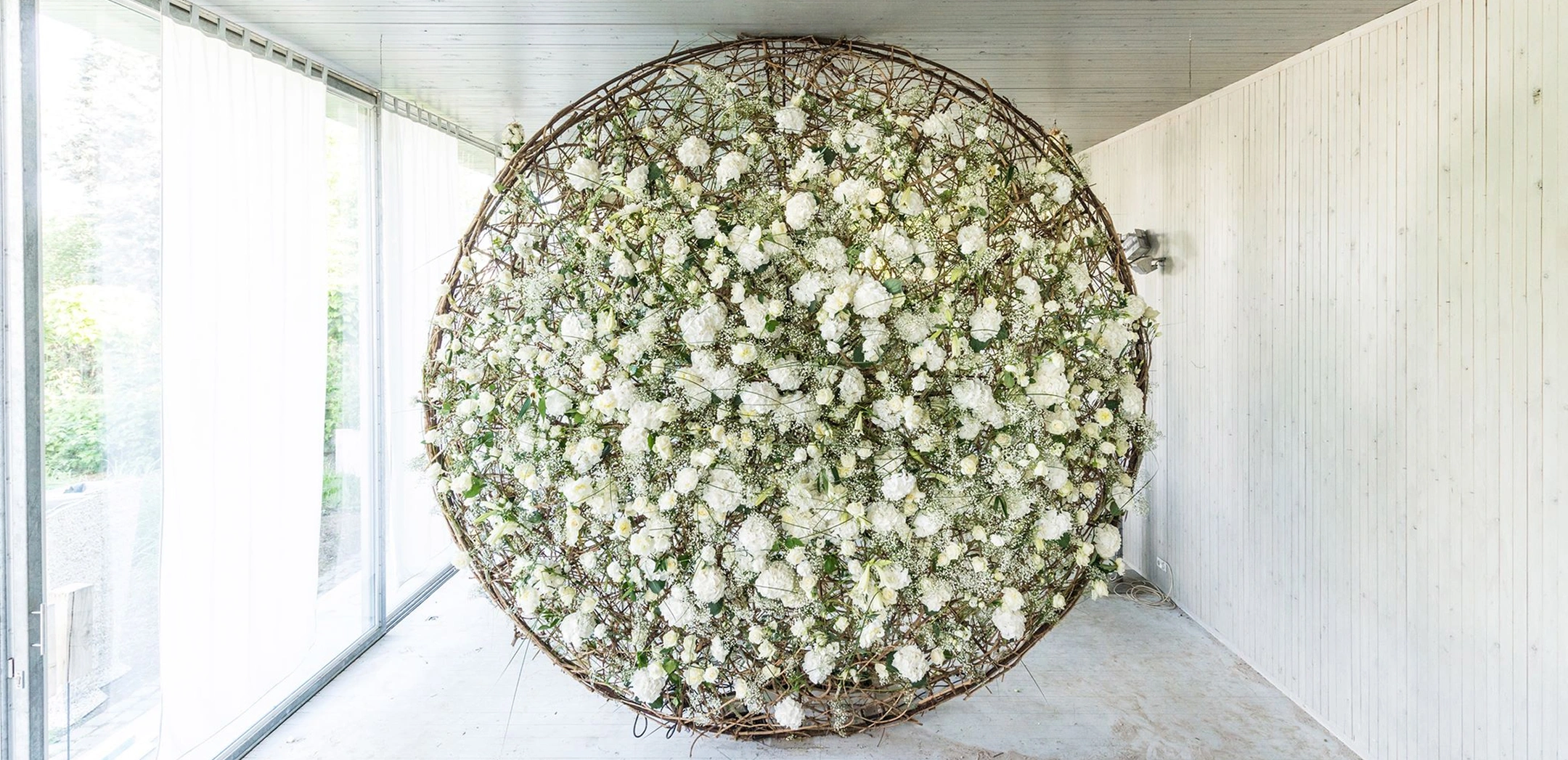How would you describe your signature style? What makes it unique?
It’s difficult to reduce my style to just one definition, as it has evolved over time. Floral design is influenced by changing trends and global movements, even megatrends that impact many disciplines, including the arts. My work leans toward sustainability and organic approaches, using plant-based and natural materials. I combine classical and modern, symmetrical and asymmetrical, vegetative and naturalistic styles, but rarely anything opulent. This aesthetic is also shaped by my long experience teaching advanced floral design. Many recognize a strong structural presence in my work, complex foundations and detailed constructions. I often find inspiration in fine arts, especially in Marc Chagall, whose paintings have inspired me to create floral works that seem to float in the air. I aim to evoke that childlike sense of wonder, the way children follow something in the air with their eyes, mouths slightly open in awe. That’s a feeling we should never lose.
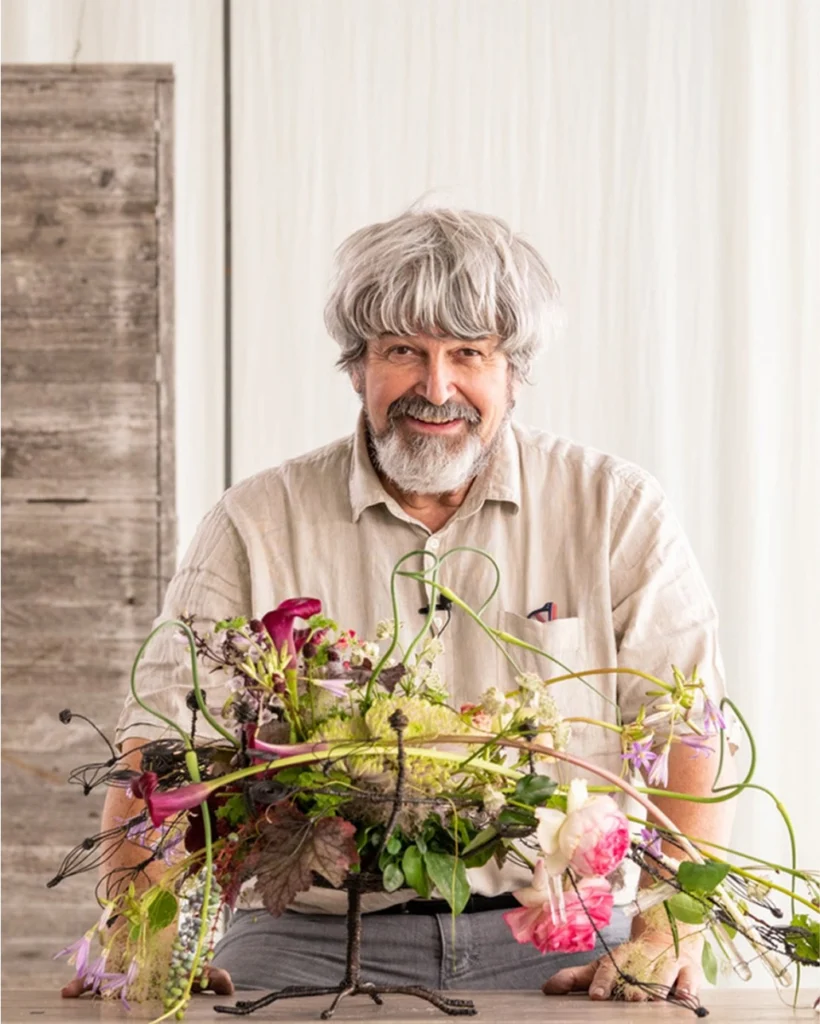
What do you want people to take away from your workshops?
Beyond the artistic aspect of floral design, I want people to value the craft itself. In my demonstrations, I often present many examples, sometimes ten or more, to explain a single design concept, like a free-flowing line. From the beginning, I encourage participants to explore their individual expression. But I also recognize that inspiration needs a solid technical foundation. That’s why I tailor my teaching to each group’s background, with different paths depending on their level of experience.
“Helping people create something from “nothing” is incredibly fulfilling, when they see what nature offers us.”
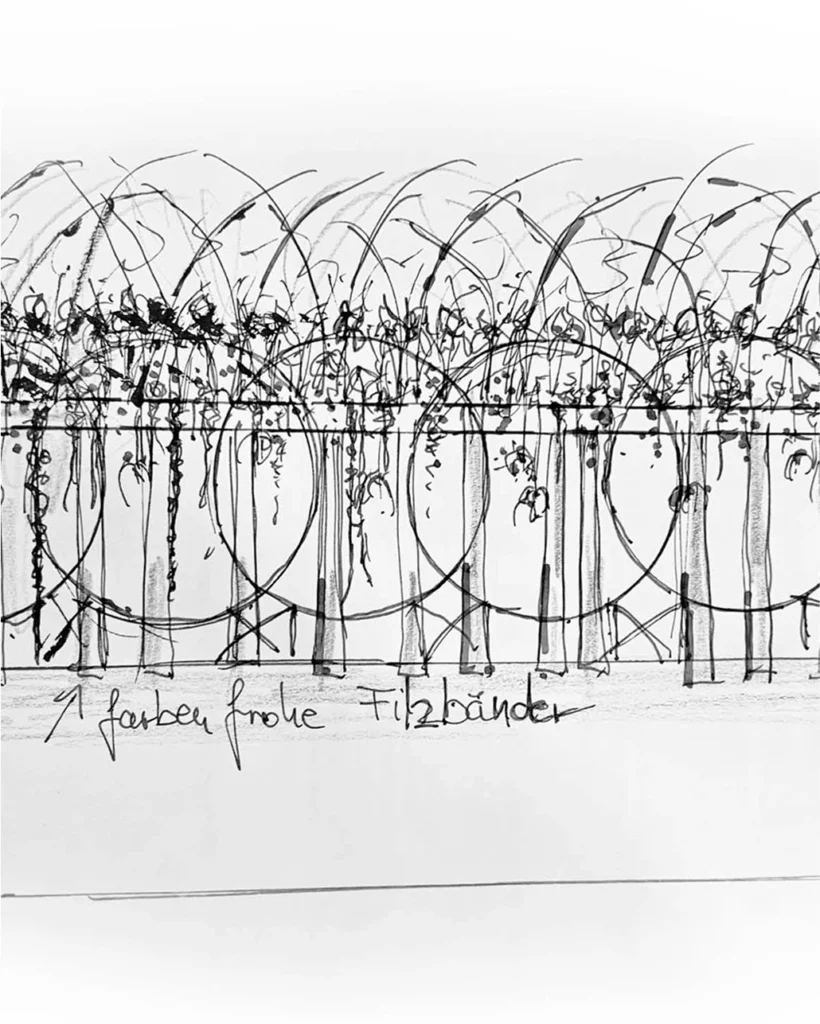
What value do educational spaces bring to the world of floral design, and how can they transform the way we create with flowers?
Learning spaces allow us to explore essential aspects of design, like studies of form, symmetry and asymmetry, rhythm and movement, spatial sequences, color theory, texture, contrast, structural techniques, and botanical knowledge. We also work on visual communication through sketching, mixing and creating colors, and applying those color-texture combinations to floral compositions. These study areas are diverse but often interconnected and they really enrich the way we understand and practice floral design.
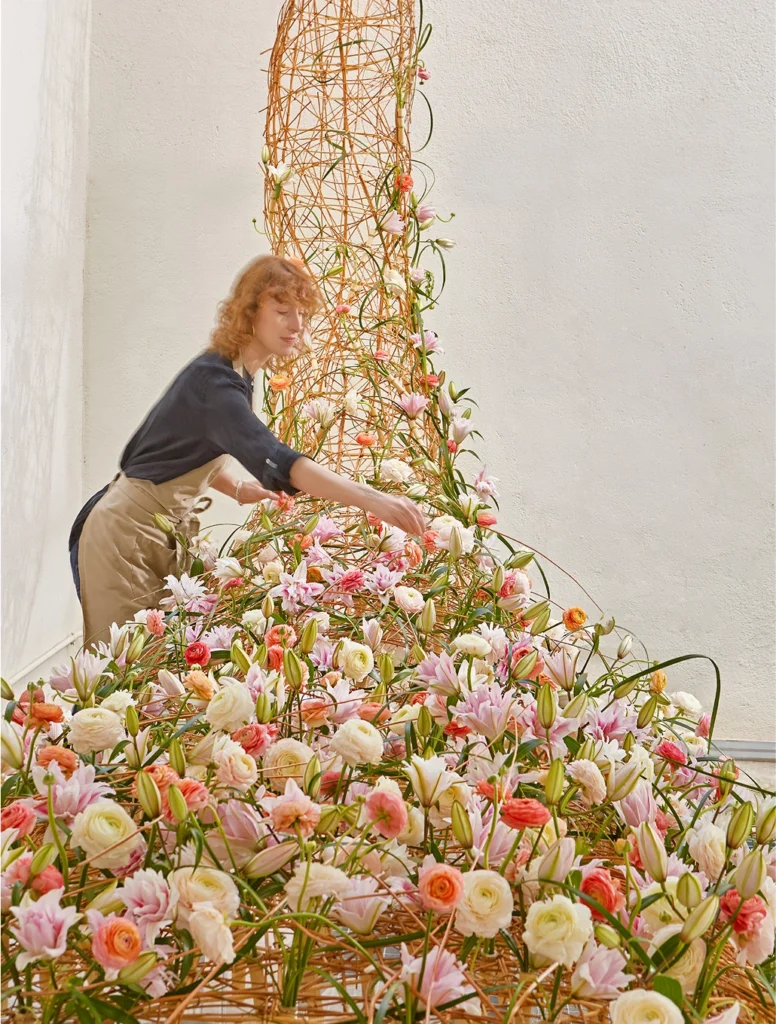
What fulfills you the most about teaching others?
Helping people create something from “nothing” is incredibly fulfilling, when they see what nature offers us. I also enjoy guiding others in transforming materials into something unexpected, and in creating new images within the vast world of plants and botanical elements.
Where do you find inspiration for your work?
This topic is so vast that I wrote an entire 335-page book about it: Wellsprings of Inspiration. I describe five main categories of inspiration, which branch into thousands of possible sources. The five wells of inspiration are Craftsmanship and technique, which is what the hands can do, the symbol is a hand. Then Methodology and design principles, what the eyes can see: form, rhythm, proportions, dominance, subordination. The symbol is an eye. Botanical knowledge, understanding the physical and cultural identity of plants, the symbol is a leaf or flower. Cultural inspiration, influences from architecture, art, religion, history, science, cuisine, agriculture, theatre, film, music, literature, and world customs, and the symbol is arrows pointing in all directions. Lastly, emotional inspiration, human feelings, like joy, sadness, grief, exuberance, sweetness, harshness, romanticism, and more, and the symbol is a heart. These categories are a roadmap to creative outcomes, like opening one window after another. Each person begins the process differently, according to their strengths. For example, someone with a technical mindset might not begin with an emotional step. Everyone has their own design process.
Was there a specific project that changed everything for you?
There wasn’t one single moment, but rather a series of steps shaped over time. Meeting my teacher Albert Eurich at the Friesdorf School of Masters was crucial. So was participating in the World Cup in Nice, where I met Norwegian designer Kai Anderson, he changed my design perspective. Later, I was inspired by graphic designers Wolfgang Kriener and Jürgen Potthoff, who guided me in building a strong visual and design identity. In South Africa, working on floral arrangements with Joan Pare was another important moment. There was no “major project” that changed everything at once, it was a constant, flowing evolution, shaped by reflection and important encounters.
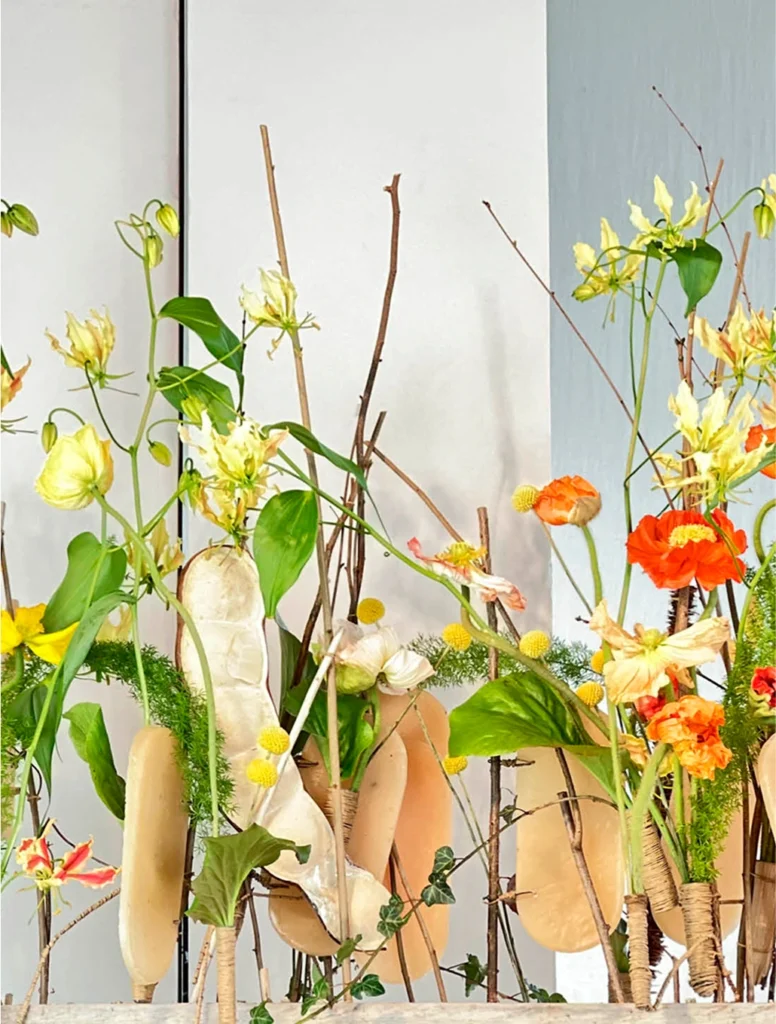
Is there a recent project that had a particular impact on you?
In recent years, I’ve been deeply involved in international master-level education programs, including in China. These are large, long-term projects that are renewed every year, along with their curriculums. I no longer take on large decoration commissions, but I find great satisfaction in working with students from all over the world. It takes emotional and cultural flexibility to work with such a wide diversity and I find that part especially rewarding.
What sustainable practices do you apply in your daily work?
For many years, I’ve worked with structures made from branches, twigs, oxidizable iron wire, compostable paper wires, hay, moss, waxed hemp, raffia, and bamboo tubes. Most of these materials biodegrade naturally. Even back in the 1980s, we wrapped floral gifts in sand-colored parchment or kraft paper, never in clear plastic or synthetic ribbons. My approach to sustainability predates current trends like #nofloralfoam, it’s been part of my practice for decades.
When people see your work, what would you like them to feel?
I don’t design with the intention of drawing attention or fishing for reactions. I follow a more instinctive, personal path, what matters most to me is creator’s satisfaction. Public attention has come in waves throughout my career, but I’ve always done what I believed was the most honest and fulfilling way to work.
